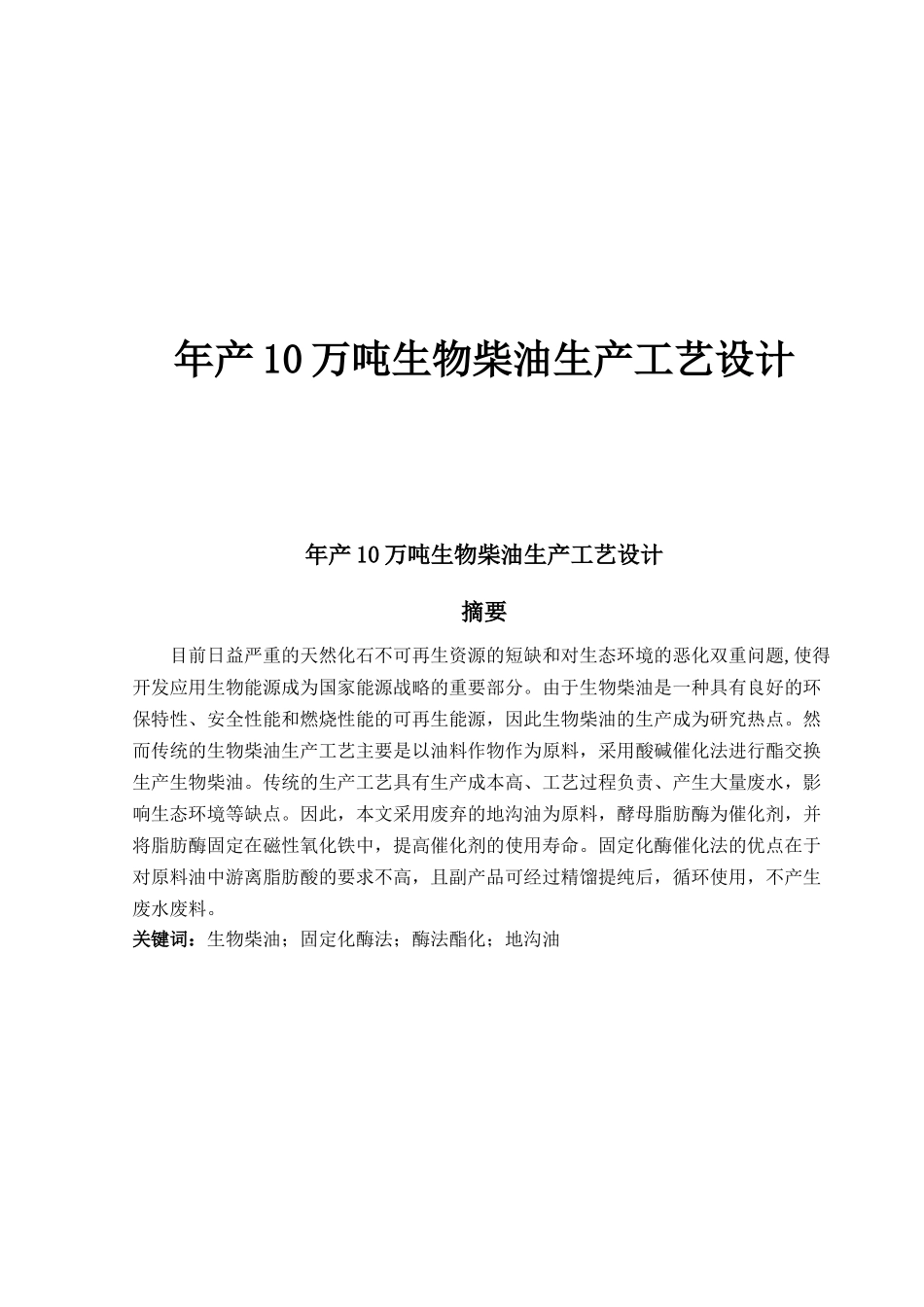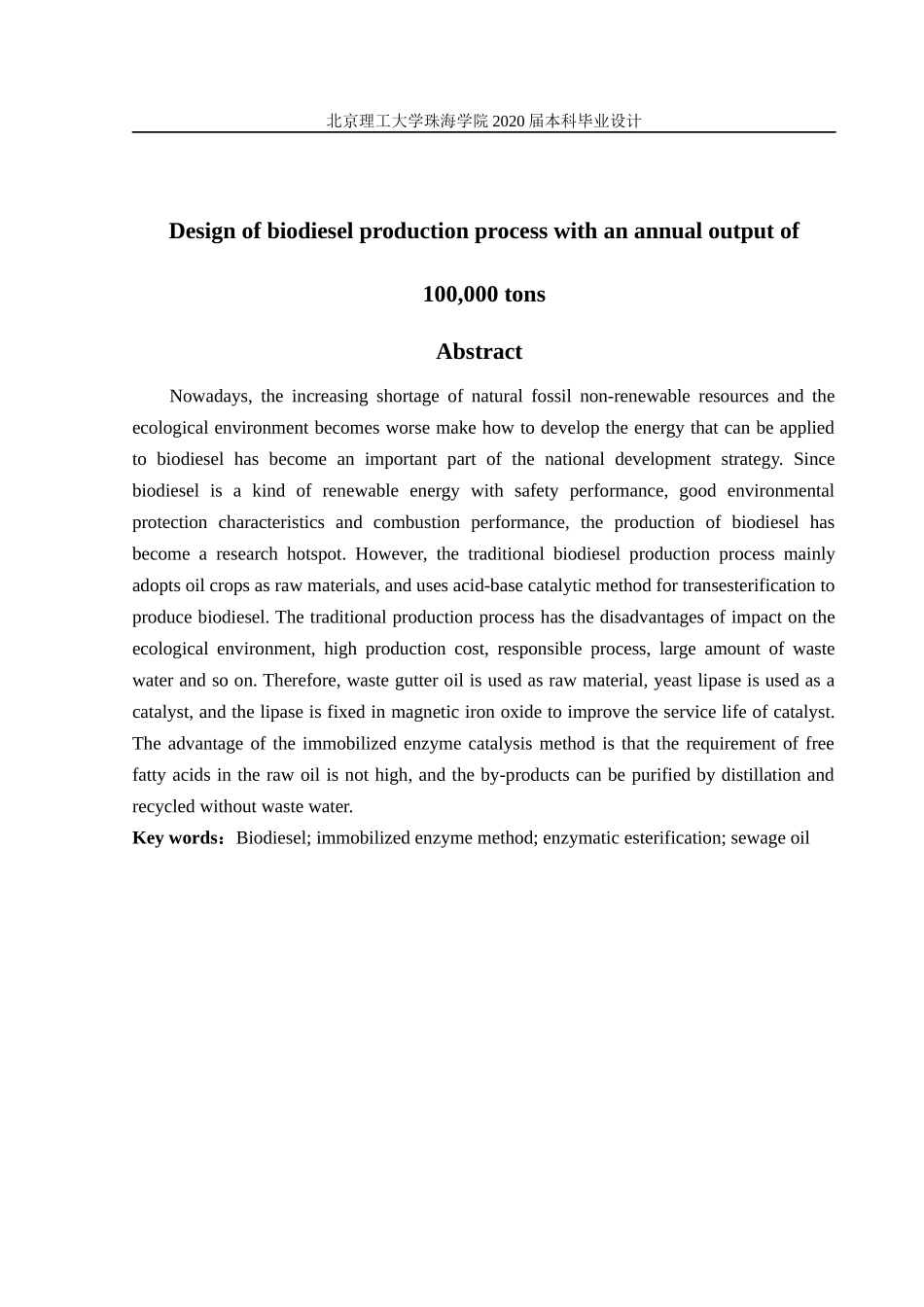年产 10 万吨生物柴油生产工艺设计年产 10 万吨生物柴油生产工艺设计摘要目前日益严重的天然化石不可再生资源的短缺和对生态环境的恶化双重问题, 使得开发应用生物能源成为国家能源战略的重要部分。由于生物柴油是一种具有良好的环保特性、安全性能和燃烧性能的可再生能源,因此生物柴油的生产成为研究热点。然而传统的生物柴油生产工艺主要是以油料作物作为原料,采用酸碱催化法进行酯交换生产生物柴油。传统的生产工艺具有生产成本高、工艺过程负责、产生大量废水,影响生态环境等缺点。因此,本文采用废弃的地沟油为原料,酵母脂肪酶为催化剂,并将脂肪酶固定在磁性氧化铁中,提高催化剂的使用寿命。固定化酶催化法的优点在于对原料油中游离脂肪酸的要求不高,且副产品可经过精馏提纯后,循环使用,不产生废水废料。关键词:生物柴油;固定化酶法;酶法酯化;地沟油 北京理工大学珠海学院 2020 届本科毕业设计Design of biodiesel production process with an annual output of 100,000 tonsAbstractNowadays, the increasing shortage of natural fossil non-renewable resources and the ecological environment becomes worse make how to develop the energy that can be applied to biodiesel has become an important part of the national development strategy. Since biodiesel is a kind of renewable energy with safety performance, good environmental protection characteristics and combustion performance, the production of biodiesel has become a research hotspot. However, the traditional biodiesel production process mainly adopts oil crops as raw materials, and uses acid-base catalytic method for transesterification to produce biodiesel. The traditional production process has the disadvantages of impact on the ecological environment, high production cost, responsible process, large amount of waste water and so on. Therefore, waste gutter oil is used as raw material, yeast lipase is used as a catalyst, and the lipase is fixed in magnetic iron oxide to improve the service life of catalyst. The...


